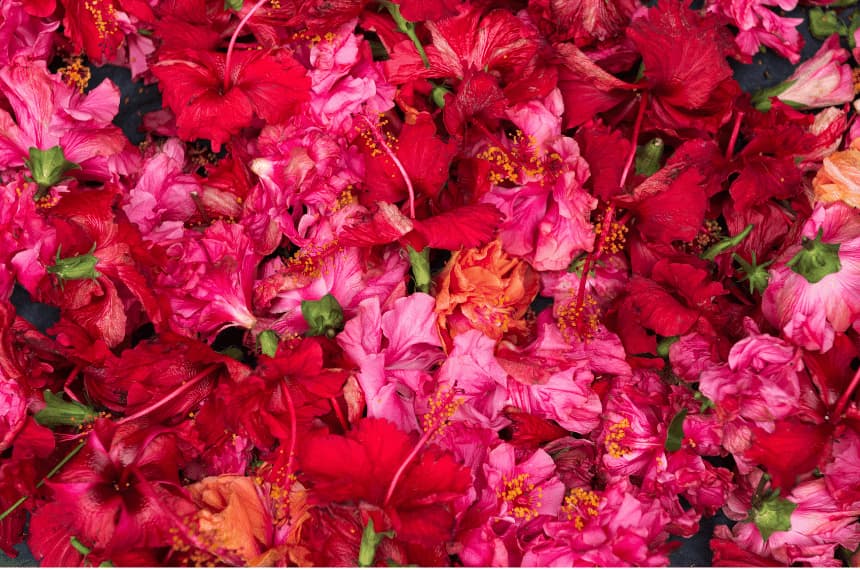The vibrant and tropical hibiscus often springs to mind when we think of the quintessential Australian garden. With its lush petals and rich hues, it’s no wonder this plant has found a special place in many Aussie backyards.
Over the years, we’ve been blessed to witness a myriad of hibiscus varieties, each with its unique charm and character.
This post will delve into some of the most popular hibiscus varieties that have become a staple in Australian gardens. Whether you’re a seasoned gardener or just starting out, there’s a hibiscus out there waiting to add a splash of colour to your outdoor space.
Overview of Australian hibiscus
Native to warm temperate, subtropical and tropical regions, the hibiscus has seamlessly integrated into the Australian landscape. But what makes the Australian hibiscus stand out?
Firstly, it’s resilience. Our hibiscus varieties have adapted to thrive in our unique climate, from the humid coasts of Queensland to the drier regions of Western Australia. They’ve become a beacon of beauty even in the harshest conditions.
Secondly, the diversity. Australia boasts a range of hibiscus species, from the large, showy flowers of the Hibiscus rosa-sinensis to the delicate blooms of the native Hibiscus heterophyllus. Each variety has its own story, deeply rooted in the rich tapestry of Australia’s gardening heritage.
Lastly, the cultural significance. For many Aussies, the hibiscus isn’t just a plant; it’s a cherished memory of summer barbecues, family gatherings, and lazy afternoons in the garden. It’s a plant that evokes emotion and connects us to a shared Australian identity.
How do you identify a hibiscus flower?
Identifying a hibiscus flower is a delightful journey into the world of botany. Here’s what you should look out for:
- Petals: Hibiscus flowers typically have five petals. These petals are often large and can come in various vibrant colours, making them standout in any garden.
- Anthers: One of the defining characteristics of a hibiscus flower is its prominent style with attached anthers. This gives the flower its unique central structure, often extending beyond the petals.
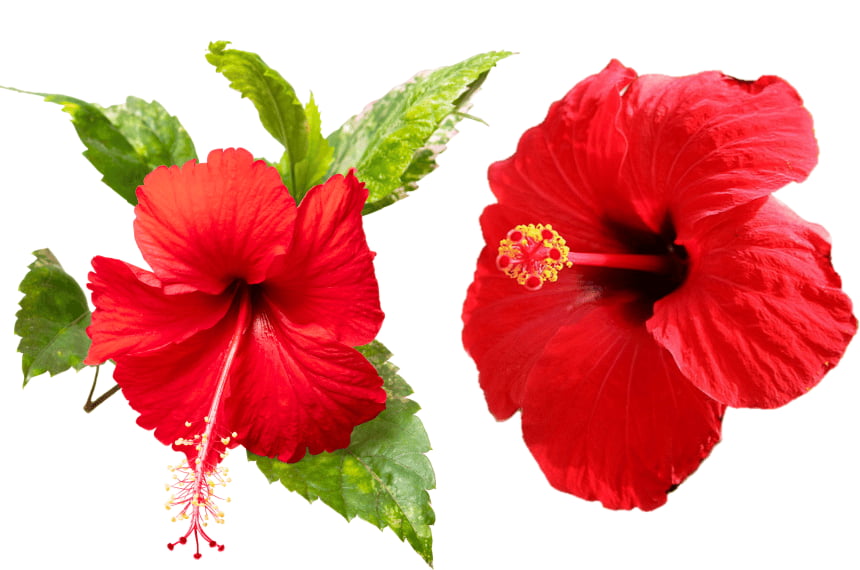
Types of hibiscus varieties in Australia
With its diverse climate and unique landscapes, Australia has become a haven for various hibiscus varieties. From coastal gardens to arid inland regions, these vibrant blooms have found their way into the hearts of many Aussie gardeners:
- Apple Blossom
- Anne Cheers
- Aussie Delight
- Aussie Lemon
- Aussie Pearl
- Black Opal
- Bimbo
- Broderick
- Cashmere Wind
- Cecilia Wyatt
- Cottonwood
- Dinki Di
- Holly’s Pride
- Jayella
- Kona
- Lemon Empress
- Linda Pearl
- Pirate’s Patch
- Smokey Mountain
- Tarantella
- Vasco
In this section, we’ll journey through some of the most beloved hibiscus varieties that grace our great land.
1. Apple Blossom
The “Apple Blossom” hibiscus is a testament to the wonders of nature. Its blooms, reminiscent of the soft hues of apple blossoms during springtime, are a delightful blend of pale pink and white with a hint of yellow at the centre. It’s like watching a sunrise captured as a flower, with the colours seamlessly blending.
Beyond its beauty, the “Apple Blossom” is known for its adaptability. It’s a variety well-suited to the Australian climate, often thriving with minimal care. Its medium-sized, glossy green leaves starkly contrast the soft-toned blooms, making it a visual treat in any garden setting.
The “Apple Blossom” hibiscus is a prime choice for those who appreciate subtlety and elegance. It’s a variety that doesn’t scream for attention but draws you in with its understated charm and grace. A true reflection of the diverse beauty found in Australian gardens.
2. Anne Cheers
The “Anne Cheers” is a hibiscus variety that embodies Australian gardens’ spirit. Its large, ruffled petals display a mesmerising blend of soft pink and peach hues, so it’s a sight to behold in any garden setting. Originating from the dedicated breeding efforts of Australian horticulturists, this variety is stunning and resilient.
One of the personal experiences we’ve had with “Anne Cheers” was in a coastal garden in New South Wales. Despite being exposed to salty air and occasional strong winds, the plant thrived and produced some of the most vibrant blooms we’ve ever seen. It’s no wonder that many Australian gardeners hold this variety close to their hearts.
If you want to add a touch of elegance and tropical charm to your garden, “Anne Cheers” is a top contender. Its adaptability, combined with its breathtaking beauty, makes it a must-have for any hibiscus enthusiast.
3. Aussie Delight
As the name suggests, this hibiscus variety is a true Australian gem. With its radiant blooms showcasing a delicate dance of lavender and deep purple shades, it’s a variety that never fails to captivate those fortunate enough to encounter it. It’s as if Mother Nature took a paintbrush and delicately crafted each petal to represent the essence of the Australian spirit.
The beauty of the “Aussie Delight” isn’t just skin deep. This variety is known for its resilience, often thriving in conditions where other plants might struggle. Its robust nature, coupled with its enchanting appearance, makes it a favourite among many Australian gardeners.
For those seeking a touch of magic and a splash of colour in their gardens, the “Aussie Delight” is a perfect choice. Its blooms add aesthetic appeal and bring with them a sense of pride, knowing that such beauty has its roots in Australian soil.
4. Aussie Lemon
Meet the “Aussie Lemon”, a hibiscus variety that’s as refreshing and vibrant as it sounds. With its bright, lemon-yellow blooms that seem to capture the essence of a sunny Australian day, this variety is a cheerful addition to any garden. The large and trumpet-shaped blooms are a beacon of joy and positivity, often attracting a myriad of pollinators.
What’s remarkable about the “Aussie Lemon” is its ability to thrive in various conditions. It’s not just its sunlit blooms that are reminiscent of the Australian spirit but also its resilience and robustness. Whether planted as a standalone shrub or integrated into a colourful garden bed, it consistently stands out, spreading joy wherever it’s planted.
If you want to infuse your garden with sunshine and a zest of life, the “Aussie Lemon” is a splendid choice. Its lively blooms not only elevate the aesthetic appeal of your space but also create a lively and dynamic environment, embodying Australia’s lively and resilient spirit.
5. Aussie Pearl
The “Aussie Pearl” is a hibiscus variety that exudes elegance and sophistication. Its blooms, true to its name, are a pristine shade of pearly white, often with a subtle blush of pink at the edges. The delicate and slightly ruffled petals give the impression of a pearl emerging from its shell, capturing the beauty and mystery of the ocean.
Beyond its ethereal beauty, the “Aussie Pearl” is known for its adaptability and resilience. A variety has been bred to thrive in the diverse Australian climate, from the humid tropics to the cooler southern regions. Its glossy, dark green leaves contrast the luminous blooms, adding depth and dimension to any garden setting.
For those seeking refined beauty and a sense of tranquillity in their gardens, the “Aussie Pearl” hibiscus is an impeccable choice. It’s a variety that not only enhances the visual appeal of a space but also brings with it an aura of serenity and grace, reminiscent of the timeless beauty of pearls.
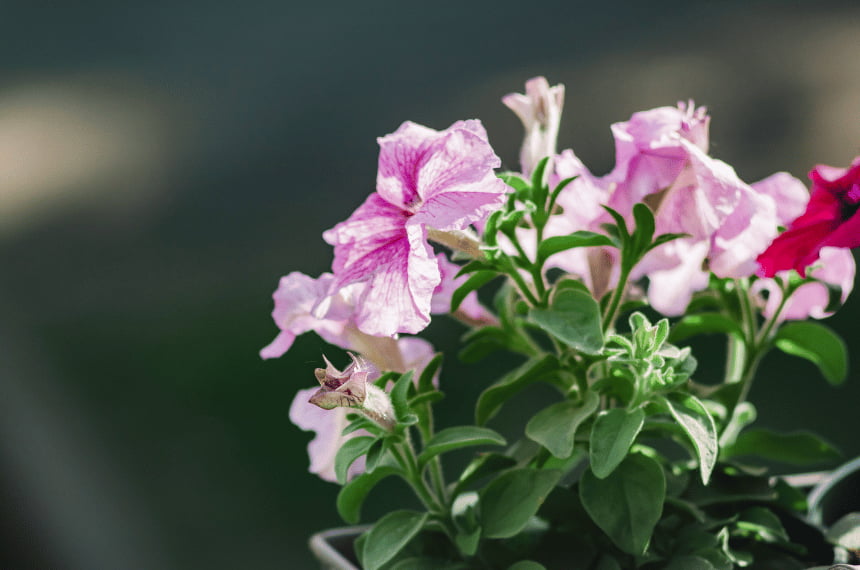
6. Black Opal
The “Black Opal” hibiscus is a variety that’s as mysterious and enchanting as its namesake gemstone. Boasting deep, velvety purple-black blooms, this hibiscus variety is a showstopper, drawing attention with its unique colouration and luxurious appearance. Rich and satiny petals seem to absorb the light, creating an alluring depth that’s hard to find in other hibiscus varieties.
The “Black Opal” is not just about aesthetics; it’s a hardy variety well-suited to the Australian environment. Its blooms, while exotic in appearance, are robust and can withstand varying weather conditions. The dark green foliage complements the deep-toned colours, creating a harmonious balance and adding to its overall appeal.
For gardeners looking to boldly introduce a touch of exotic elegance to their space, the “Black Opal” hibiscus is an unparalleled choice. It’s a testament to the wonders of nature, showcasing how even the most familiar plants can surprise us with their diverse beauty.
7. Bimbo
The “Bimbo” hibiscus, with its playful name, brings a burst of joy and vibrancy to any garden. Characterised by its cheerful, bright pink flowering blooms, this variety celebrates life and colour. Soft and slightly overlapping petals create a full, rounded bloom that radiates happiness.
This variety is known for its robust nature, often thriving with minimal care. It’s a testament to its adaptability, flourishing in various Australian climates and soil types. The medium-sized green leaves provide a lush backdrop for the blooms, enhancing their visual appeal.
For those looking to infuse their garden with a sense of fun and vivacity, the “Bimbo” hibiscus is a fantastic choice. It’s a variety that embodies the joy of gardening, reminding us of nature’s simple pleasures.
8. Broderick
The “Broderick” hibiscus is a variety that speaks of elegance and subtlety. With its soft, pastel-hued blooms that range from a gentle lavender to a muted mauve, it’s a hibiscus that exudes a quiet charm. The delicate and slightly curved petals come together to form a bloom reminiscent of vintage botanical illustrations.
Beyond its visual appeal, the “Broderick” is a hibiscus known for its resilience. It’s a variety bred to thrive in the diverse Australian environment, showcasing its beauty across different seasons. The deep green, slightly serrated leaves contrast beautifully with the pale blooms, adding depth and texture to the plant.
For those who appreciate the understated beauty of nature, the “Broderick” hibiscus is a perfect addition to the garden. It’s a variety that doesn’t demand attention but invites quiet admiration and reflection with its gentle hues and graceful form.
9. Cashmere Wind
The “Cashmere Wind” hibiscus is poetry in plant form. Its blooms, a delicate shade of creamy white with subtle hints of peach, are reminiscent of the softness and luxury of cashmere. The petals, velvety to the touch, cascade gracefully, creating an image of a gentle breeze flowing through fine fabric.
What’s remarkable about the “Cashmere Wind” is its adaptability. While its appearance might suggest delicacy, this variety is robust, often flourishing in Australian climates. Its foliage, rich green with a glossy finish, provides a beautiful contrast to the muted elegance of its blooms.
The “Cashmere Wind” hibiscus is an exemplary choice for gardeners seeking refined beauty. It’s a plant that not only elevates the aesthetic of a garden but also evokes a sense of serenity and grace, much like a gentle wind caressing the softest cashmere.
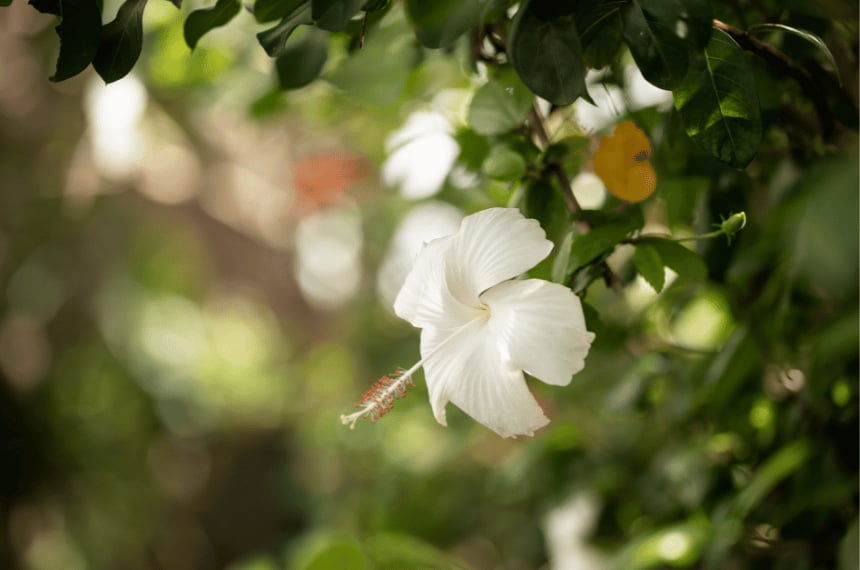
10. Cecilia Wyatt
The “Cecilia Whyatt” hibiscus is a variety that embodies timeless beauty and grace. Its blooms, a rich shade of deep magenta with a slight gradient towards its centre, are a visual treat. The petals, broad and slightly overlapping, create a bloom that’s both regal and inviting.
Beyond its striking appearance, the “Cecilia Whyatt” is known for its hardy nature. It’s a variety that’s been cultivated to withstand the varying conditions of the Australian landscape, from the humid tropics to the temperate zones. Its deep green foliage, with a matte finish, complements the vibrancy of its blooms, adding to its overall charm.
For those looking to infuse their garden with classic elegance and contemporary vibrancy, the “Cecilia Whyatt” hibiscus is an ideal choice. It’s a variety that resonates with history while embracing the present, making it a cherished addition to your garden.
11. Cottonwood
The “Cottonwood” hibiscus is nature’s ode to simplicity and purity. Its blooms, pristine white with a soft, cottony texture, evoke a sense of calm and tranquillity. The petals gently ruffled at the edges, forming a bloom reminiscent of freshly fallen snow or a soft cotton ball.
But don’t be fooled by its delicate appearance; the “Cottonwood” is a robust variety. It’s been bred to thrive in the diverse Australian climate, showcasing its beauty across seasons. Its foliage, a pale green with a silvery undertone, provides a harmonious backdrop for its luminous blooms.
For gardeners seeking a touch of serenity and a break from the vibrant hues, the “Cottonwood” hibiscus is a perfect choice. It’s a plant that not only adds aesthetic value but also brings an aura of peace, making it a favourite among those who appreciate the subtler beauties of nature.
12. Dinki Di
The “Dinki Di” hibiscus is as authentically Australian as its name suggests. With its radiant, sun-kissed orange blooms that seem to capture the very spirit of the Australian outback, this variety is a celebration of our great land’s vibrant character. The petals, slightly curled at the edges, radiate warmth and energy, much like a sunlit day in the heart of Australia.
Beyond its striking visual appeal, the “Dinki Di” is known for its resilience. It’s a variety cultivated to flourish in the diverse Australian environment, from the coastal regions to the arid interiors. Its deep, glossy green foliage provides a lush canvas for the fiery blooms, enhancing their visual impact.
For those looking to infuse their garden with energy and a touch of the Australian spirit, the “Dinki Di” hibiscus is an unbeatable choice. It’s a variety that not only stands out for its beauty but also resonates with the heart and soul of Australia.
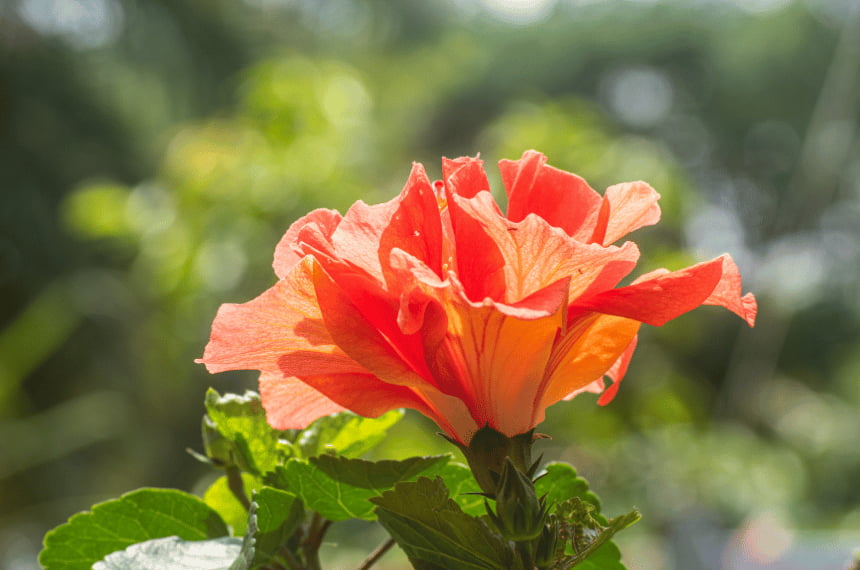
13. Holly’s pride
The “Holly’s Pride” hibiscus is a variety that exudes elegance and sophistication. Its blooms, a deep shade of burgundy with subtle hints of ruby, are reminiscent of a fine wine or a velvety rose. The smooth and slightly curved petals come together to form a bloom that’s both luxurious and inviting.
Beyond its visual allure, “Holly’s Pride” is known for its robust nature. It’s a variety bred to thrive in the diverse Australian climate, showcasing its beauty across different seasons. Its foliage, rich green with a slight sheen, complements the depth of its blooms, adding to its overall charm.
The “Holly’s Pride” hibiscus is an impeccable choice for gardeners seeking refined beauty and a sense of luxury. It’s a variety that not only elevates the aesthetic of a space but also brings with it an aura of luxury and grace.
14. Jayella
The “Jayella” hibiscus is a burst of tropical delight. Its blooms, a vibrant shade of coral pink with a sunlit yellow centre, are reminiscent of a tropical sunrise. The broad and slightly wavy petals radiate warmth and positivity, evoking images of sun-kissed beaches and balmy summer mornings.
This variety is known for its adaptability, often flourishing in various parts of Australia. Its deep emerald green foliage provides a lush backdrop for the blooms, enhancing their tropical appeal.
For those looking to bring a touch of the tropics to their garden, the “Jayella” hibiscus is a top choice. Its lively blooms not only add a splash of colour b
15. Kona
The “Kona” hibiscus is a nod to the tropical allure of the Hawaiian islands. Its blooms, a deep shade of cerulean blue with a contrasting crimson centre, are a visual treat reminiscent of the Pacific’s azure waters. The slightly ruffled and layered petals create a sense of depth and movement as if capturing the ebb and flow of ocean waves.
Beyond its captivating appearance, the “Kona” is celebrated for its hardy nature. Despite its tropical origins, this variety has been embraced by Australian gardeners. It has shown remarkable adaptability to our diverse climates. Its foliage, a glossy shade of deep green, provides the perfect canvas for the striking blooms, adding to its overall magnetism.
For gardeners yearning for a touch of the tropics and the serenity of the ocean, the “Kona” hibiscus is an unparalleled choice. It’s a variety that enchants its beauty and evokes a sense of calm and wonder, much like a tranquil day by the sea.
16. Lemon Empress
The “Lemon Empress” hibiscus is a radiant beacon of zest and vitality. Its luminous shade of lemon yellow blooms are like sunbeams captured in petal form. The smooth and slightly cupped petals come together to form a refreshing and invigorating bloom, reminiscent of a cool lemonade on a hot summer’s day.
Beyond its cheerful appearance, the “Lemon Empress” is known for its robust nature. It’s a variety cultivated to thrive in the diverse Australian environment, from the coastal regions to the sun-baked interiors. Its foliage, vibrant green with a slight sheen, complements the sunny blooms, adding to its overall appeal.
For those seeking to infuse their garden with sunshine and a zest for life, the “Lemon Empress” hibiscus is a splendid choice. It’s a variety that not only brightens up any space but also serves as a reminder of life’s simple joys and pleasures.
17. Linda Pearl
The “Linda Pearl” hibiscus is elegance personified. Its blooms, a soft shade of blush pink with an iridescent sheen, exude a sense of grace and sophistication. The petals, delicate and slightly curled at the edges, come together to form a bloom that’s both classic and contemporary, reminiscent of a timeless pearl necklace.
Beyond its ethereal beauty, the “Linda Pearl” is celebrated for its adaptability. It’s a variety bred to flourish in the diverse Australian climate, showcasing its beauty across different seasons. Its foliage, a muted shade of green with a velvety texture, provides a harmonious backdrop for the luminous blooms, enhancing their visual appeal.
For gardeners seeking a touch of romance and timeless elegance in their gardens, the “Linda Pearl” hibiscus is an impeccable choice. It’s a variety that captivates with its beauty and evokes a sense of nostalgia and timeless charm.
18. Pirate’s Patch
The “Pirate’s Patch” hibiscus is a variety that tells a tale of adventure and mystery. Its blooms, a striking combination of deep burgundy with patches of gold, are reminiscent of a pirate’s treasure chest filled with gold coins and precious gems. The slightly ruffled and irregular petals add to the sense of unpredictability and excitement, much like a pirate’s journey on the high seas.
Beyond its captivating appearance, the “Pirate’s Patch” is known for its robust nature. It’s a variety that’s been cultivated to withstand the challenges of the Australian environment, from the salty coastal breezes to the intense heat of the inland regions. Its foliage, a deep shade of green with a rugged texture, complements the adventurous spirit of its blooms.
For those with a sense of adventure and a love for the unconventional, the “Pirate’s Patch” hibiscus is a perfect choice. It’s a variety that stands out for its unique beauty and resonates with the spirit of exploration and discovery.
19. Smokey Mountain
The “Smokey Mountain” hibiscus is a variety that captures the essence of the rugged Australian landscape. Its blooms, a muted shade of smoky lavender with hints of slate grey, evoke images of mist-covered mountain ranges and serene, untouched wilderness. The petals, slightly crinkled and layered, create a sense of depth and dimension reminiscent of mountain terrains and their ever-changing moods.
Beyond its evocative appearance, the “Smokey Mountain” is celebrated for its resilience. It’s a variety bred to thrive in the diverse Australian climate, from the cool mountain regions to the temperate valleys. Its foliage, a deep shade of forest green with a matte finish, provides a harmonious backdrop for the atmospheric blooms.
For gardeners seeking a touch of the wild and a connection to the natural beauty of the Australian landscape, the “Smokey Mountain” hibiscus is an exemplary choice. It’s a variety that not only resonates with the spirit of the land but also brings a sense of tranquillity and reflection.
20. Tarantella
The “Tarantella” hibiscus is a dance of colours and vibrancy. Its blooms, a fiery red shade with bright orange streaks, are reminiscent of Italy’s passionate and lively Tarantella dance. The petals, slightly flared and ruffled, move and sway, capturing the rhythm and energy of this traditional dance.
Beyond its dynamic appearance, the “Tarantella” is known for its robust nature. It’s a variety cultivated to flourish in the diverse Australian environment, from the humid coastal regions to the arid interiors. Its foliage, a glossy shade of emerald green, provides a lush backdrop for the fiery blooms, enhancing their visual impact.
For gardeners seeking a touch of passion and dynamism in their gardens, the “Tarantella” hibiscus is an unbeatable choice. It’s a variety that stands out for its beauty and embodies the spirit of celebration and life, making every day feel like a dance.
21. Vasco
The “Vasco” hibiscus is a variety that exudes a sense of mystery and depth. Its blooms, a deep shade of navy blue with subtle hints of violet, are a rare sight in the hibiscus world, making it a prized possession for many gardeners. The smooth and slightly curved petals come together to form a bloom that’s both enigmatic and captivating, reminiscent of the vastness of the night sky.
Beyond its mesmerising appearance, the “Vasco” is celebrated for its hardy nature. It’s a variety bred to thrive in the diverse Australian climate, showcasing its beauty across different seasons. Its foliage, a shade of deep green with a silvery undertone, complements the depth of its blooms, adding to its overall allure.
For those seeking a touch of the mysterious and the ethereal in their gardens, the “Vasco” hibiscus is a perfect choice. It’s a variety that captivates with its unique beauty and evokes a sense of wonder and exploration, much like a voyage through the stars.
When to plant hibiscus in Australia
Generally, the optimal planting period is during the warmer months, from October to April, when the soil has warmed up and the threat of frost has passed. This allows the plants to establish themselves and thrive in the ensuing summer heat.
However, this can vary from region to region. In a more specific dive into when to plant hibiscus around Australia:
- Northern and Central Regions: In the tropical and subtropical climates of Queensland and Northern Territory, hibiscus can be planted almost year-round, although it’s best to avoid the peak of summer heat.
- Southern Regions: In the temperate zones of Victoria, New South Wales, and South Australia, spring and early summer (October to December) are the prime planting periods to ensure the plants establish well before winter.
- Western Australia: In the diverse climates of WA, coastal regions favour spring planting, while in the hotter, arid areas, opting for a cooler period during late winter to early spring is beneficial.
- Tasmania: Given its cooler climate, early to mid-spring is the preferred planting time to maximise the growing season.
Remember, regardless of the variety – be it the vibrant “Dinki Di” or the mysterious “Vasco” – providing your hibiscus with ample sunlight, well-draining soil, and regular watering, especially during dry periods, will set them on a path to flourish and brighten your garden with their enchanting blooms.
Tips on growing hibiscus in Australia
Whether you’re a seasoned gardener or just starting out, here are some expert tips on how to grow and care for these flamboyant plants:
- Soil and nutrition: Hibiscus plants prefer slightly acidic, well-drained soil. If your soil is too alkaline or iron-deficient, leaves can turn yellow. This can be improved with iron chelates. Using straw, hay, or sugarcane mulch can help keep roots cool and soil moist in summer, but ensure it’s kept away from plant stems to prevent basal rot.
- Feeding: For best results, feed your hibiscus plants monthly during the warm seasons. Use a fertiliser formulated for flowers and fruit. Additionally, spray foliage with a seaweed tonic during summer to cater to the plant’s micronutrient needs.
- Watering: The large-flowered Chinese hibiscus cultivars need regular watering during dry weather to encourage repeat flowering.
- Pruning: Regular pruning, especially in late winter, can invigorate your hibiscus, promoting new growth and better blooms. It also helps manage potential mite infestations and maintain the plant’s desired shape.
- Organic pest management: Hibiscus plants can sometimes attract pests like the hibiscus beetle or the erinose mite. Opt for organic solutions like pyrethrum spot-spraying for beetles and wettable sulphur for mites.
Growing hibiscus in Australia can be a rewarding experience. With the right care and attention, these plants can transform any garden into a tropical paradise, showcasing a spectacular display of colours and beauty.
Conclusion
Growing hibiscus in Australia is more than just a gardening endeavour; it’s a journey into the heart of tropical beauty. These vibrant blooms can transform any garden into a tropical oasis with their myriad colours and forms.
While they come with challenges, from pests to specific soil needs, the rewards are undeniably worth the effort. With the right care, attention, and passion, hibiscus plants can thrive in the diverse Australian climate, offering gardeners a front-row seat to nature’s spectacular show.
FAQs
What is the difference between a tropical hibiscus and a regular hibiscus?
Tropical hibiscus, such as Hibiscus rosa-sinensis, is known for its large, brightly coloured flowers and glossy green leaves. It’s popular in gardens and landscapes and produces hibiscus tea. Regular hibiscus can refer to various species, but they might not have the same vibrant appearance as the tropical variety.
Are hibiscus considered drought tolerant?
Most hibiscus varieties are not particularly drought-tolerant and require constant moisture. However, the Hibiscus’ Cottonwood’ is more drought tolerant, an Australian native, and can handle hot summers.
How much water does hibiscus need each week?
The water requirement for hibiscus varies. Most hibiscus plants need about 25-50 mm of water per week, depending on the variety and weather conditions. This includes rainfall and irrigation. However, once established, Hibiscus tiliaceus rubra ‘Cottonwood’ needs about 10-20mm of water a week and can endure short drought periods.
Does Epsom salt help hibiscus bloom?
Yes, Epsom salt, a form of magnesium sulphate, can promote blooming in hibiscus plants. Magnesium is vital for plants, and a deficiency can hinder blooming. Epsom salt can be used as a foliar spray or added to the soil. However, it should be used in moderation to avoid nutrient imbalances or potential harm to the plant.

